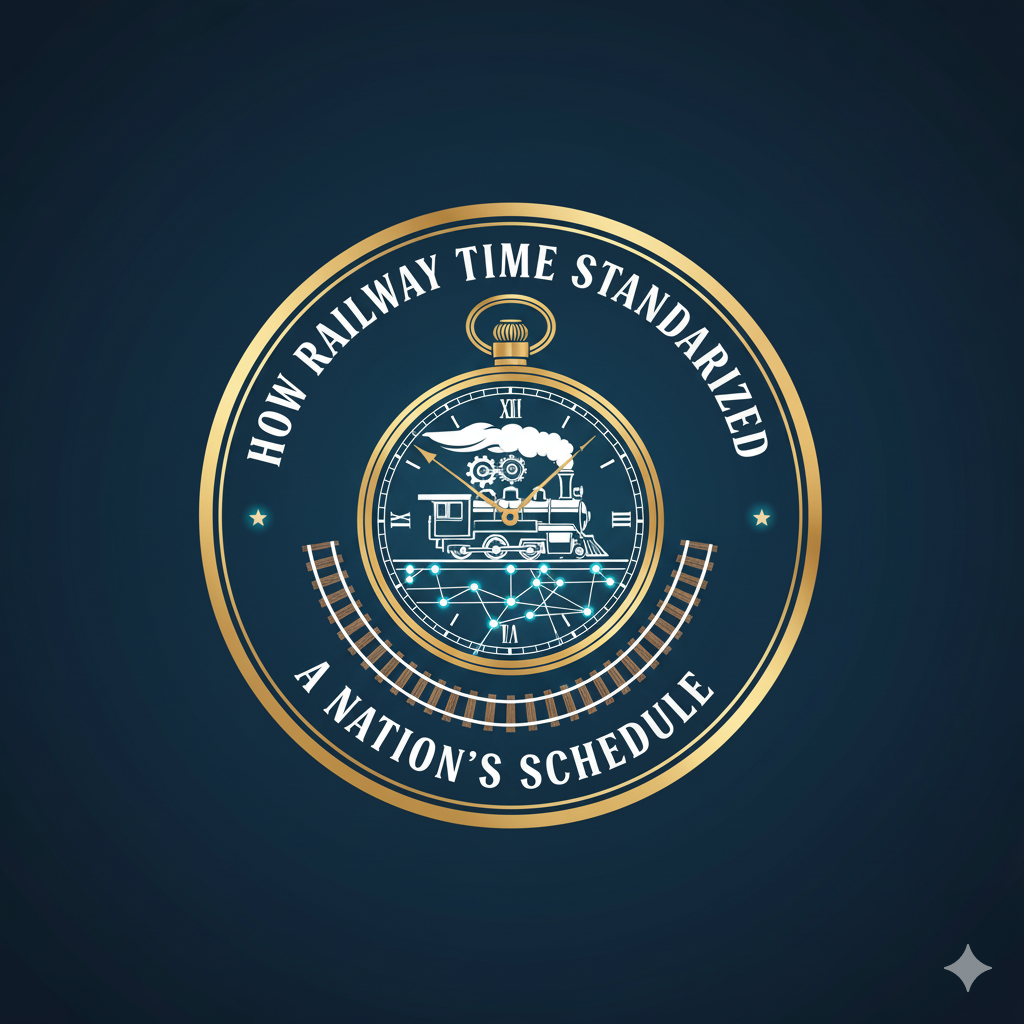How Railway Time Standardized a Nation’s Schedule?
The development of standardized time zones was a direct and necessary response to the chaos created by the rapid expansion of railway networks in the 19th century. Before their implementation, towns and cities across a country operated on their own local solar time, which was determined by the sun’s position at their specific longitude. This meant that a clock in a city just a hundred miles east or west would show a slightly different time, a difference that was negligible in an era of horse-drawn travel. However, for the new, high-speed railway systems, this patchwork of local times created an untenable situation for creating reliable train schedules. A railway company publishing a timetable was faced with a bewildering array of local times at every stop, making it incredibly difficult to coordinate arrivals, departures, and connections. This confusion led to frequent collisions on shared tracks, missed connections for passengers and freight, and a general state of inefficiency that threatened the safety and economic viability of the entire rail industry, creating a pressing need for a unified national time standard.
The adoption of railway time, which divided continents into uniform time belts, solved these critical problems by introducing a single, consistent temporal reference for an entire region. Instead of a train schedule having to account for the minute time changes at every single stop, railway operators could now publish a timetable based on one standard time for the entire line or a major junction. This synchronization was paramount for managing train traffic control and preventing disasters on single-track lines where precise timing was a matter of life and death. The synchronized railway clocks at stations ensured that all passengers, conductors, and station masters were working from the same temporal blueprint, eliminating the guesswork and miscalculations inherent in the old system. This innovation did not just make schedules more reliable, it fundamentally transformed the punctuality of rail transport, built public trust in the system, and enabled the complex, interconnected national economies we know today by allowing for the precise and predictable movement of both people and goods across vast distances.
Frequently Asked Questions
Question: What was used before time zones were created?
Answer: Before time zones, cities and towns used Local Solar Time, meaning their clocks were set based on the sun’s position at their specific longitude.
Question: Who was a key proponent of railway time?
Answer: Sir Sandford Fleming, a Canadian engineer, was a leading advocate for a worldwide system of time zones to solve the scheduling problems of the railroads.
Question: Did all countries adopt time zones at the same time?
Answer: No, adoption varied. Great Britain’s railway system adopted a standard “Railway Time” in the 1840s, while the United States and Canada implemented the system in 1883.
Question: Was there public resistance to standardized time?
Answer: Yes, many people were attached to their local time and resisted the change, viewing “railway time” as an imposition by big corporations.
Question: How did time zones affect other industries?
Answer: The standardization revolutionized telegraphy, finance, and all forms of long-distance commerce by providing a unified framework for scheduling and coordination.
Question: What is the relationship between time zones and longitude?
Answer: Time zones are roughly based on 15-degree increments of longitude, as the Earth rotates 15 degrees each hour.
Question: How did this change impact passenger travel?
Answer: It made travel predictable and reliable, allowing passengers to confidently plan journeys with connections without the confusion of constantly changing local times.
Question: Were time zones perfectly straight lines?
Answer: No, for practical and political reasons, time zone boundaries often zigzag to follow state or national borders or to keep entire communities within the same zone.
Question: Did the invention of time zones influence daily life beyond travel?
Answer: Absolutely, it standardized the workday, radio broadcasting, and even social appointments, creating a shared societal rhythm.
Question: What was the “October Revolution” of 1883 in the U.S.?
Answer: This refers to the day in October 1883 when U.S. and Canadian railroads independently implemented the time zone system, which was later officially adopted by the governments.
Keywords: standardized time zones, railway networks, reliable train schedules, railway time, train traffic control, synchronized railway clocks, local solar time, national time standard, railway operators, punctuality of rail transport, collisions on shared tracks, 19th century transportation
Tags: #TimeZones #RailwayHistory #Transportation #IndustrialRevolution #Scheduling #Standardization #Logistics #HistoryOfTechnology #TrainTravel #SandfordFleming







